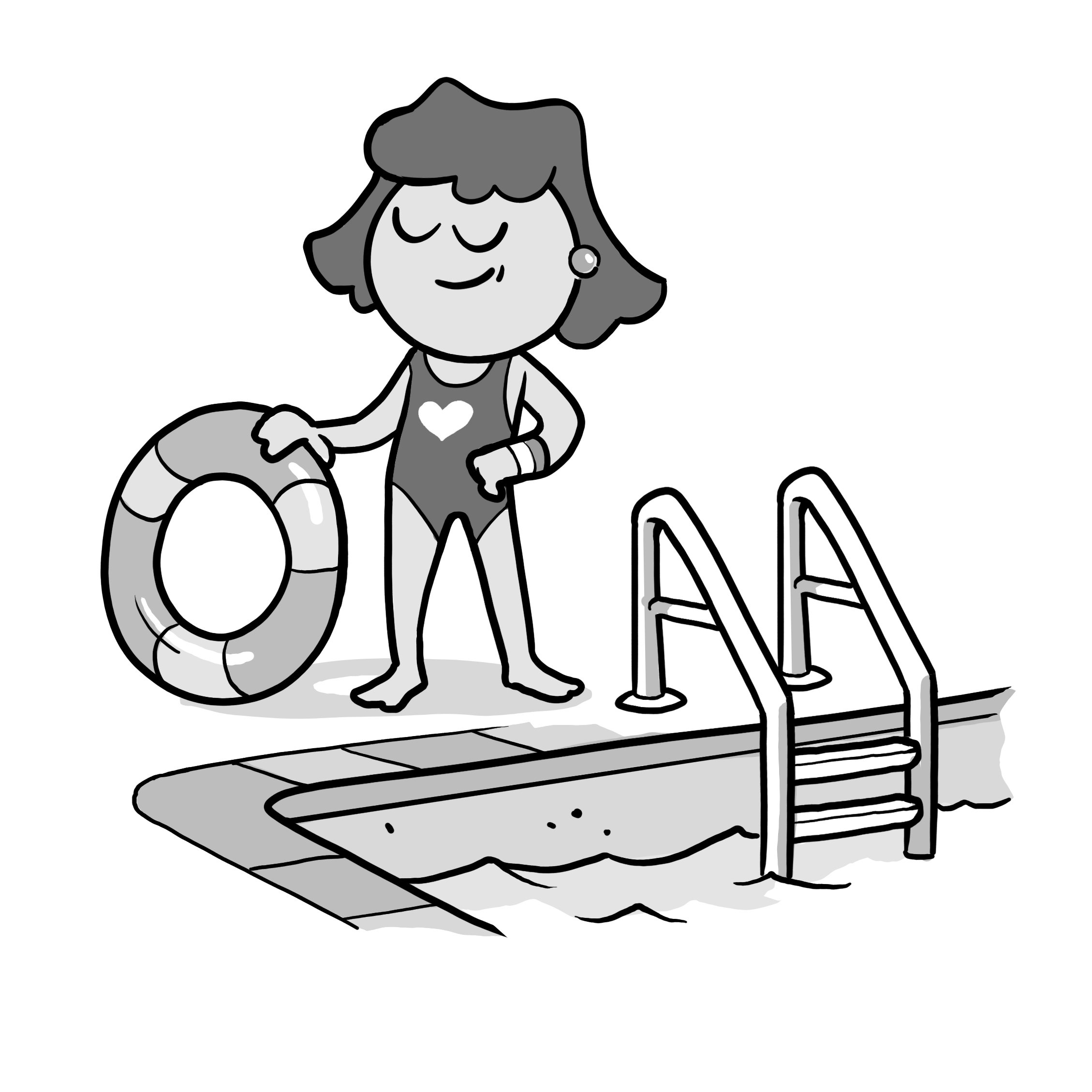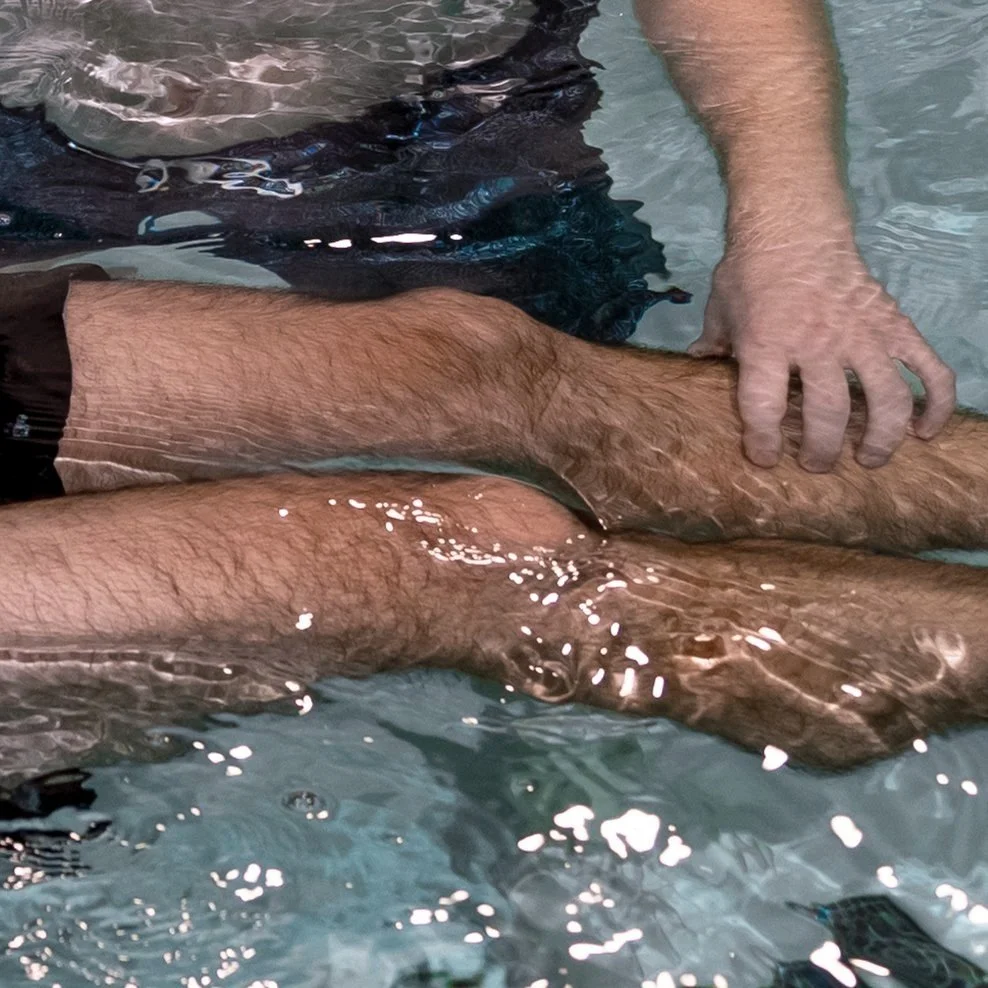The Benefits of Pool Therapy for Cancer
Pool Therapy can Help. Move Easier, Decrease Pain and Feel Better.
The timing of this blog is perfect as it aligns with the annual re-opening of the Esquimalt pool where I work In-Clinic at Lab Health Physio. Pool therapy, otherwise known as hydrotherapy, aquatherapy or aquatic therapy can have many benefits for those with cancer. A side from increasing well-being, patients often find the pool very encouraging. Often water is the one environment where those with cancer can move with ease and feel less pain. As discussed in a previous blog, cold water exposure when undergoing hormone therapy or experiencing chemotherapy induced peripheral neuropathies, while following a protocol, has many benefits. . This blog however is speaking to water therapy in comfortable temperatures.
Noting the physics, the pressure of the water known as the ‘hydrostatic pressure’ acts like a global brace for the joints of the body.
Imagine one big brace if you will, helping all your joints to feel stable and safe. Furthermore, water offers buoyancy which means less gravitational impact and load on the body. Often patients can walk with ease, move quicker, and achieve more in water than they can on land. The benefits of pool therapy are plenty, beyond its physics, let’s unpack more.
Pool Therapy Can Free Up Movement while Decreasing Load on Joints.
Pool Therapy Improves Mobility.
As stated above the buoyancy of water reduces the impact on the body, which can help those with cancer achieve more range of motion. This can especially help in the treatment phase when patients have completed surgery and their wound is safely sealed (~4 weeks post-op). More so, pool therapy can also be helpful post radiation when radiation fibrosis syndrome and other cancer related conditions are causing painful movement.
Often cancer related hormone therapy can cause joint pain, hot flashes and exercise intolerance. Being in the water can help the body stay cool, manage pain and better tolerate exercise. Pool therapy can help with breast cancer, supporting better shoulder and thoracic mobility post surgery or post radiation.
As per my previous blog on chemotherapy induced peripheral neuropathies , water can allow nerves to slide and glide, there for lessening neuropathy associated pain. Pool therapy can open up mobility to an area that has been too stiff or painful to move prior. Cancer rehab in the water can result in less neuropathic pain and reduce the chance of neuropathies whether you are in the treatment or the recovery phase of cancer rehab.
Pool Therapy Decreases Pain.
As noted above, buoyancy is a wonderful thing for reducing joint impact while hydrostatic pressure provides immense support. When your brain feels that your joints are supported and carrying less load, together these experiences allow your brain to relax. This can translate into your pain response being less protective or reactive, meaning less pain. When pain arises after surgery, radiation or chemotherapy, the water can be the first safe place where your brain finally allows you to move with ease.
In addition to these messages of support, if the pool is warm, temperature is another powerful tool for distracting the brain from pain. Some patients even benefit most from a 7-10 min rehab routine in the hot tub.
Elaborating on pool therapy and its ability to lessen pain, bone metastasis is a condition that lead to land-based exercises to being very limited and painful. Exercising on land can often involve the need for safety and adhering to guidelines. when pain is so limiting.
Pool therapy is a great option when diagnosed with bone mets. Often those with bone metastases find the pool to be the first place they have experienced pain relief, as we can decompress the spine through buoyancy.
Pool Therapy Improves Muscle Endurance and Stamina.
As there is less load on joints in the water, this means you can move with more ease, and therefor perhaps with more speed. When increasing the pace of any task, your heart rate and blood pressure increase as well. Endurance training involves doing a movement repetitively with light load for a longer period of time. Water allows you to stress your aerobic system there for increase your aerobic capacity. Pool based aerobic training results in improved stamina; increased ability to handle the day to day.
When considering a return to work, evidently stamina matters. If you’re struggling with pain when exercising on land, consider pool therapy as your first place to start rebuilding stamina.
Muscle endurance vs strength, how do we distinguish the two? Building strength requires progressive overload and gravity. This is the one down fall of aquatic therapy, the pool doesn’t allow for strength adaptations nor does it help to improve balance. However, the pool can allow for repetitions with light resistance, improving muscle endurance over time. Improvements in strength endurance have carry over into stamina improving; meaning your functional capacity: ‘lung’s ability to handle stress’ also improves. Therefor pool therapy can lead to improved stamina and endurance: improvements in the day to day tolerance of walking, standing and working.
Pool Therapy Reduces Swelling.
Pool therapy involves hydrostatic pressure, right? This global brace on your body can act like compression, reducing edema and swelling. In addition, gentle movements with repetition while elevating your heart rate can improve your circulation. This results in blood and swelling moving and muscles acting like pumps. Pool therapy can help with the re-absorption of stubborn swelling; in addition to kick starting lymphatic drainage.
Pool Therapy Improves Cardiovascular Health.
This is no surprise. As noted above, pool therapy improves muscular endurance, stamina and circulation. As your aerobic system is heavily driven by your cardiovascular system, your heart’s fitness and lung capacity therefor both benefit from pool therapy.
The research since 2021 has shown the above general benefits of pool therapy for those with cancer to be somewhat universal. Yet so, patients greatly benefit from the safety and clinical expertise of a personalized pool therapy program. Before starting any pool therapy program, consider a comprehensive cancer rehab initial assessment.
Pool Therapy Feels Good.
Last but not least, often patients move with ease in the pool; finding this makes them feel pretty darn good. Feeling good in the pool can carry over into improved mental-well being through out the day. Who doesn’t love a little water dancing to oldies?
Everyone’s cancer journey is their own, hence the need for cancer rehab varies immensely. Yet so, the benefits of pool therapy remain widespread. Consider consulting with a cancer physiotherapist and getting started with pool therapy today.
Thank you for your interest in science and rehab,
Kindly, The Cancer Physio







